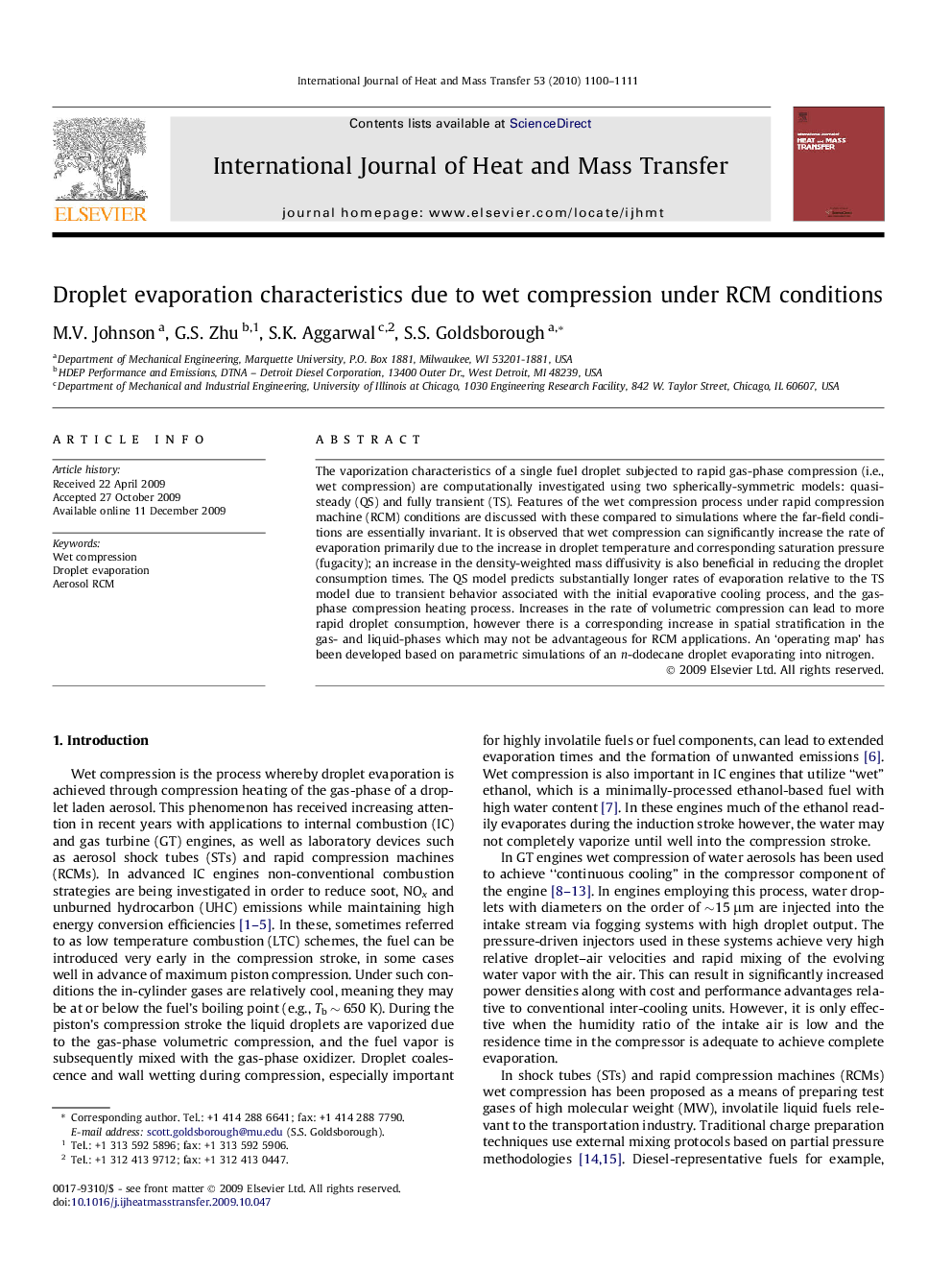| Article ID | Journal | Published Year | Pages | File Type |
|---|---|---|---|---|
| 658865 | International Journal of Heat and Mass Transfer | 2010 | 12 Pages |
The vaporization characteristics of a single fuel droplet subjected to rapid gas-phase compression (i.e., wet compression) are computationally investigated using two spherically-symmetric models: quasi-steady (QS) and fully transient (TS). Features of the wet compression process under rapid compression machine (RCM) conditions are discussed with these compared to simulations where the far-field conditions are essentially invariant. It is observed that wet compression can significantly increase the rate of evaporation primarily due to the increase in droplet temperature and corresponding saturation pressure (fugacity); an increase in the density-weighted mass diffusivity is also beneficial in reducing the droplet consumption times. The QS model predicts substantially longer rates of evaporation relative to the TS model due to transient behavior associated with the initial evaporative cooling process, and the gas-phase compression heating process. Increases in the rate of volumetric compression can lead to more rapid droplet consumption, however there is a corresponding increase in spatial stratification in the gas- and liquid-phases which may not be advantageous for RCM applications. An ‘operating map’ has been developed based on parametric simulations of an n-dodecane droplet evaporating into nitrogen.
